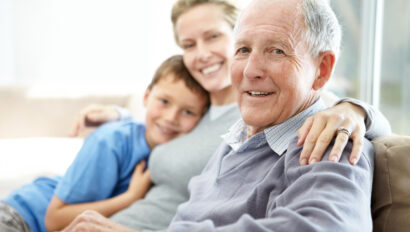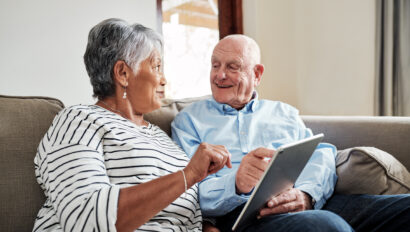Dancing Can Counteract Age-Related Decline in Physical and Mental Abilities
A new study, published in Frontiers in Human Neuroscience, reported that older people who routinely partake in physical exercise can reverse signs of aging in the brain, but the most interesting finding is that dance has been shown to have the most profound effect when it comes to behavior. It encourages self-expression as well as both verbal and non-verbal communication. It also helps with balance, spatial awareness, posture, sensorimotor skills and reaction time that all become important concerns as we age. And, also worth noting, it does all this without affecting cardio-respiratory functioning.
As a result of these and other interesting findings, dance is now considered an enormously beneficial form of therapy based on the idea that motion and emotion are interconnected. Dancing is an activity that originally emerged from a need for social interaction and non-verbal communication. It is a universal human expression tied to our emotions, and therefore, when compared to other physical exercise, it provides multisensory stimulation that can offset age-related deterioration. Dancing is fun, but for many people, it becomes so much more. It holds the key to their happiness, boosting their confidence, self-esteem and overall well-being.
Think back to some of the happiest moments of your life and imagine how incredible it would feel to relive those feelings and experiences all over again. For senior citizens who have Alzheimer’s and dementia, dance therapy can provide these opportunities. Music and dance trigger nostalgia, and it is for this reason that we make dance time an important part of the senior programming we offer at the JCC. We watch video clips of dances every week and then encourage our participants to dance to their favorite hits from the 40s, 50s and 60s. Within minutes, they appear to be transformed. As they begin to dance, the music sweeps them away and allows them to enjoy special feelings they once had in their younger years. As a teacher, my heart is full when I see their energy level increase and big smiles spread across their faces.
Researchers who have studied the hippocampus – the part of the brain that is associated with memory, emotions, and motivation – have found that dancing can have a strong impact on both cognitive and motor learning, memory, balance, endurance and flexibility. In addition, it also aids in strengthening social interactions. We see this all the time with the seniors who participate in our programs at the JCC. They may come into a dance class feeling a bit tired and quiet, but shortly after their body begins to move, they become engaged, excited, and involved. And when they describe how dancing makes them feel, they use words such as “exhilarating,” “joy,” “good as gold,” and even things like “it reminds me of my grandma’s kitchen.” It is heartwarming to see and proof that someone’s demeanor can completely change when happiness and laughter take over a room full of dancing senior adults.
There is an abundance of factual evidence to support that dance is an excellent, therapeutic form of exercise and socialization for aging adults – and real life shows us that dancing just makes us happy!

Written by Allyson Carolan, Dance Director at the JCC School of Dance. Allyson holds a BFA in Music Theater from The Hartt School at the University of Hartford.


